|
|
 |
|
|
Soviet Tank Markings in Berlin – Please don’t shoot me Tovarisch!
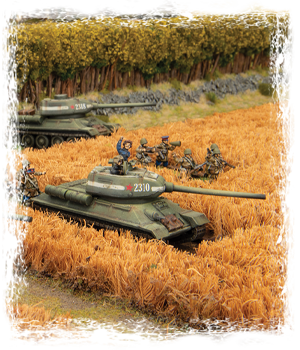 |
Soviet Tank Markings in Berlin – Please don’t shoot me Tovarisch!
With Adam Brooker
The final assault on Berlin by the Soviets brings us better troops, new Formations, and some cool new equipment, which is excellent, but it also gives us something very rare for the Soviets in WW2, some official Soviet tactical tank markings!
The Soviets did not have a standardized tactical marking system as the Germans had in their Panzer Divisions from the start of the war, they had green paint….. and that was about it. It was 4BO Green to be exact, and it was the standard priming, corrosion protection and camouflage colour from 1941-45 for all Soviet tanks in WW2.
Eventually, units would attempt some sort of localised camouflage unit per unit, eg. Green and Brown two-tone for Summer, and some numbering, if they had time before they were thrown into battle, but nothing that encompassed the whole Soviet army. In the winter of 1941, the Soviets trialled a very interesting-looking Winter Camouflage pattern, which looks very striking, I think it would be a challenge to do but would look excellent on the table.
|
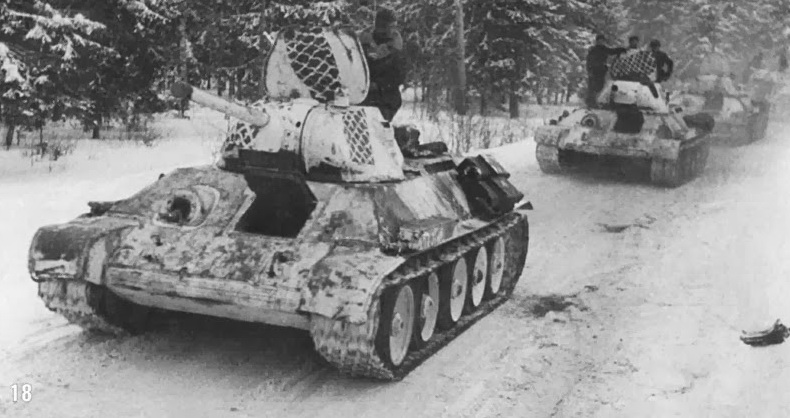 |
| Soviet T34/76 Tank with trail Winter camouflage in GABTU proving grounds, September 1941 |
|
The 4BO Green tank was painted about 60/70% in a white wash paint leaving green patches, and in these green areas, thin white lines were painted which looked like netting stretched across the vehicle. Apparently, it worked very well in the winter conditions and did a great job of breaking up the silhouette of the tank, not only in open country, but also in winter urban environments, but it took 6 to 8 hours to apply and the tank had to be thoroughly cleaned before application. It was seen early in the war, but less often later in the war.
Other schemes were either two contrasting colours of green or in very rare cases a three-tone of Green, Brown and Yellow/Red, which was seen earlier in the war as well but not widely adopted. But two-tone or three-tone camouflage schemes were used more often in the self-propelled gun and tank hunter units, which would often try to ambush from covered positions, and breaking up their silhouettes helped. From 1941 onwards there were allowed to paint their vehicles from the following 3 colours, using the 4BO Green as a base, Dark Green 4BO (45-50%), 7K Yellow (15-30%), and 6K Dark Brown (15-30%).
|
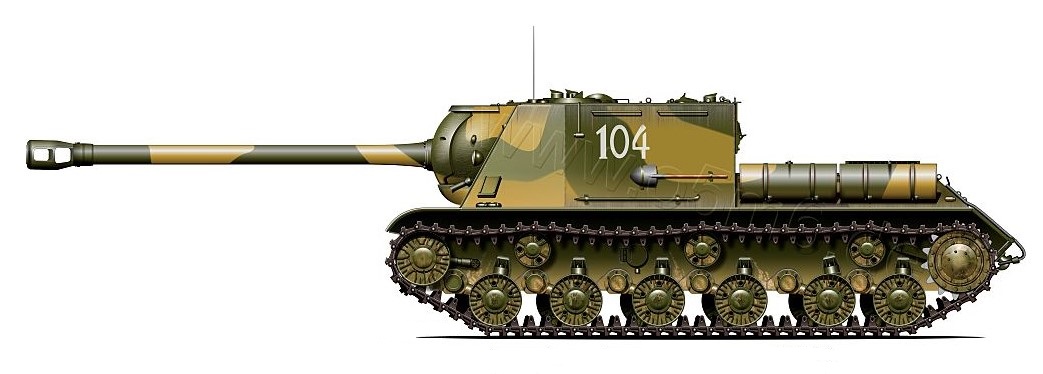 |
|
ISU-122 in a 4BO Green and 7K Yellow two-tone, Hungary, Autumn 1944
|
|
As far as tactical markings, it was very ad-hoc and often different from Corps to Brigade to Company, with each one having its own symbols and numbering system. But as a general rule, their tank numbering used sets of either 2, 3 or 4 digits, and/or some combination of geometric shapes and numbers. Some units had a numbering system to specify companies, with the first number representing the company. Eg. 209, would be 2nd Company, 9th tank. In the case of 2310, it would be 2nd Company, 3rd Platoon, and 10th tank, but there was no standard system, different companies in each Brigade or Corps would be different. They also often used an animal symbol or geometric symbol to represent the company like, and then 1 or 2 numbers to represent the vehicle number. Guards units in particular seemed to have their own specific symbols.
|
|
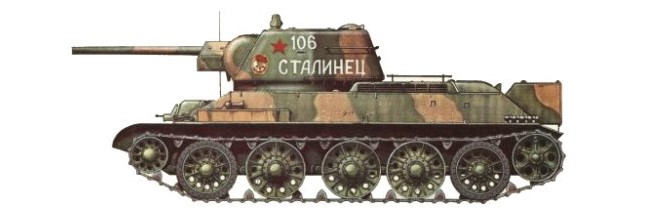
|
| Soviet T-34/76 Stalinetz in two-tone, this combination of markings and camouflage would be very rare but has been photographed. |
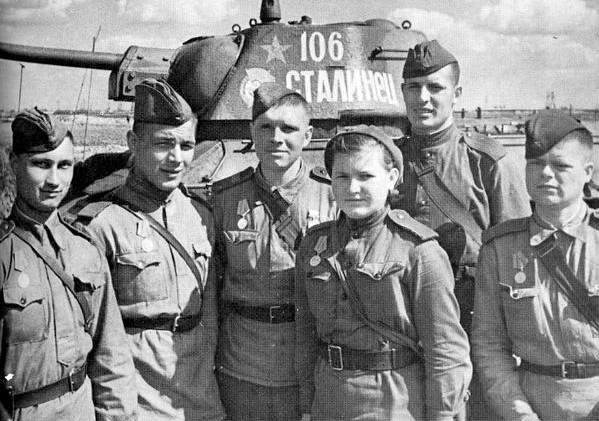 |
| 1st Red Banner tank Brigade - T-34/76 tank ‘Stalinetz’ with crew |
| It should be noted in all cases it was rare for the Soviet Red Star to be on the side of the tank or turret, it was not common but it has been captured in photographs, some Guards units later in the war would put a coloured Guards logo on the side of the tanks. But it was common for slogans or writing to be put on the side of the tank in Cyrillic. Eg. ‘Za Rodinu’ (For the Motherland), ‘Za Stalin’ (For Stalin), or ‘Lidice’ (Revenge for the German massacre of civilians in Lidice) among others. These were often painted in either white or yellow paint on the sides of the tanks. |
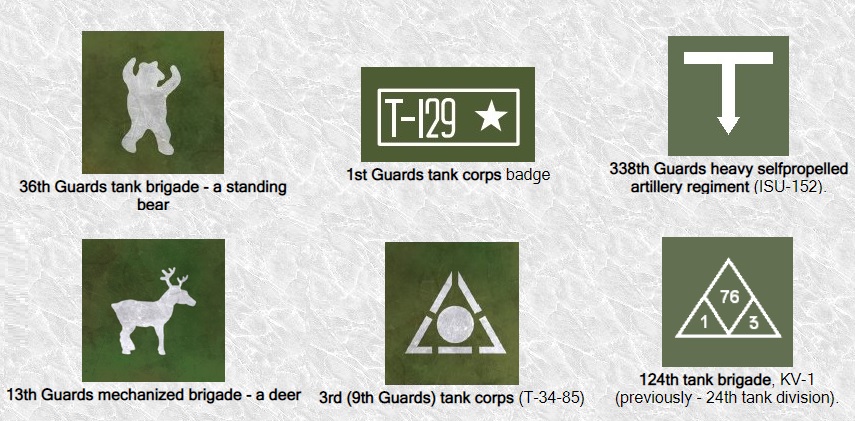 |
| Examples of Soviet Tactical markings, it was varied and different for each unit |
|
Air recognition signs were also used and became widely used in 1943 during the Don Battles and Kursk where the Soviets started to really wrestle the air over the battlefield away from the Germans. The Germans had started to struggle to replace their losses in both aeroplanes and pilots, given the other pressures on other theatres, and at the same time Soviet aircraft production, pilots, and most importantly better planes became a common sight over the battlefield. The rugged and well-armed IL-2 Sturmovik was becoming a real issue for German forces, and to try to avoid bombing their own forces, the Soviets started to use air recognition symbols on their vehicles. These were often white geometric symbols on the turret top or engine deck.
With the Russian advance on Berlin in 1945 and the overwhelming allied air presence, Soviet High Command issued an order on the 24th of April that special air recognition markings be placed on vehicles fighting in the area, which seemed to be mostly followed. This consisted of horizontal lines on the sides of the turrets and a white line across the top of the turret. This was also communicated to the Western Allies, as there was fighting both in the East and West of Berlin. From May 1st 1945 onwards white triangles on the top of turrets were also introduced.
|
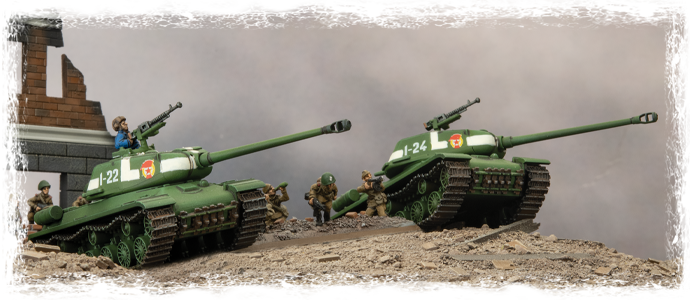 |
|
One of the most often modelled IS-2 tanks from the Soviet assault on Berlin in 1945 is an IS-2 from the 7th Guards Independent Heavy Tank Brigade, with a distinctive Soviet Red Star and Polar Bear logo for their unit tactical symbol. The Polar Bear symbol was in recognition of their previous victory in the Karelian Campaign, they were fighting in the southeast Berlin suburbs, with Chuykov’s 8th Guards Army.
|
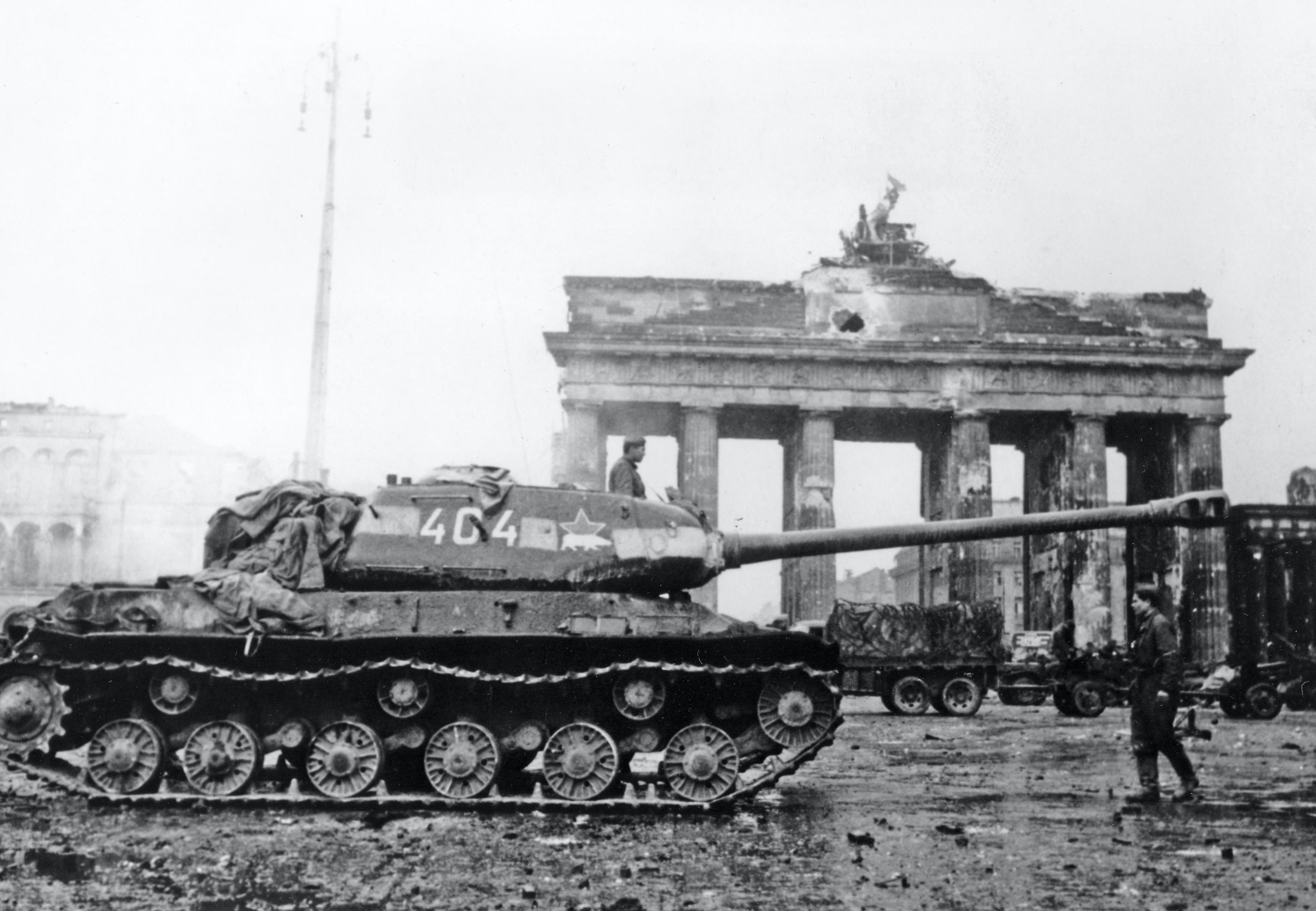 |
|
IS-2 of the 7th Guards Independent Heavy Tank Brigade - note the large white stripes on the turret
|
|
For other vehicles, similar markings were applied which give the Soviet vehicles fighting around Berlin a very distinctive look. Also, you saw the addition of bed-spring stand-off armour in an attempt to mitigate or reduce the effect of German hand-held anti-tank weapons like the Panzerfaust and Panzerschreck. There is not a lot of evidence that the thin/light mesh armour worked well in prematurely detonating the warheads of the German anti-tank weapons, but it may have increased the confidence of Soviet tank crews going to deadly close in assaults…. I think something more solid like the German Schurzen may have been slightly better in doing so, and there have been some attempts at that (see below). But overall, I think the distance between the mesh/plates was not far enough to disrupt the hot liquid jets from the better-shaped warheads like the Bazooka and Panzershrecks/Fausts from penetrating the armour.
|
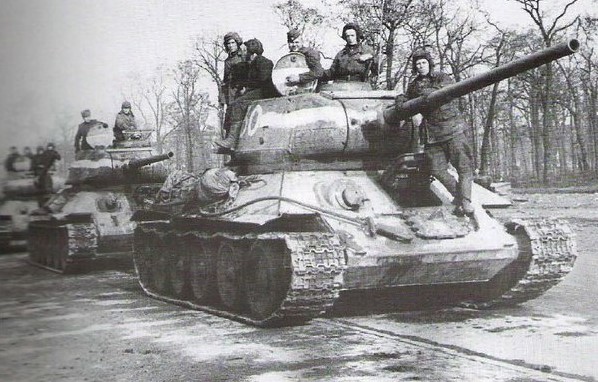 |
|
T-34/85 in Berlin shows the air recognition marking on the turret side and top
|
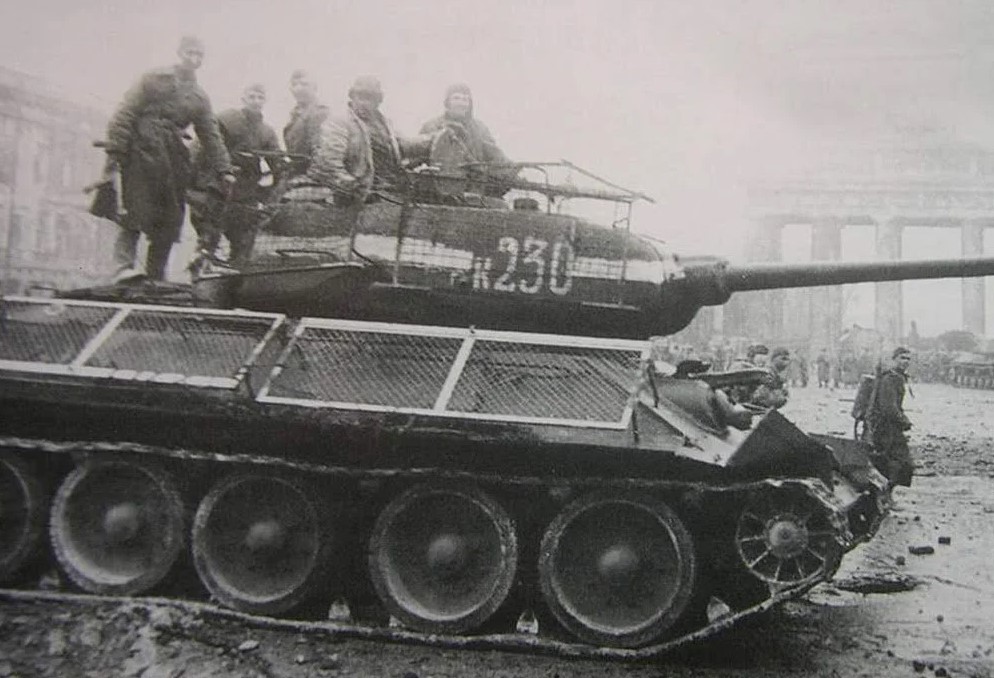 |
|
T-34/85 in Berlin shows the air recognition markings and bedspring armour and tank riders
|
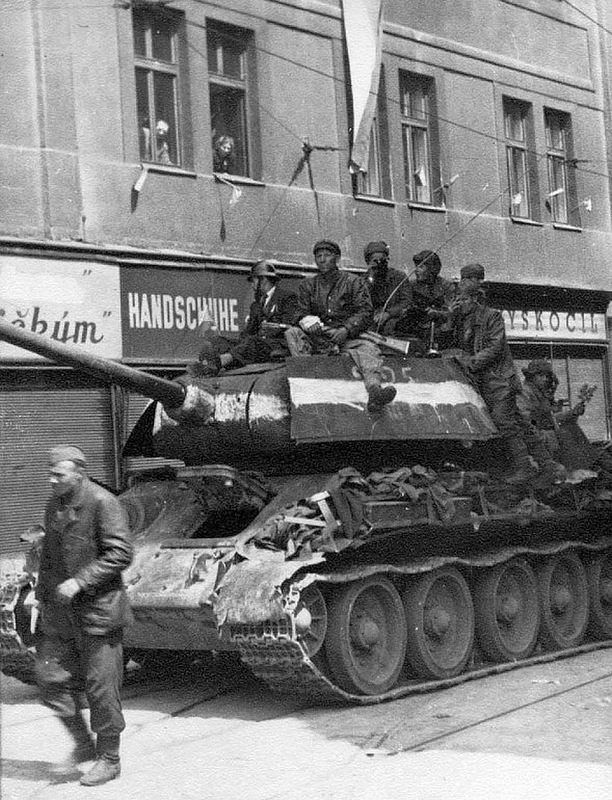 |
|
T-34/85 in Berlin with thicker stand-off plates to protect against Panzerfausts
|
|
Assault guns like the ISU-152, and others were also in the fighting in Berlin, and had the horizontal lines on the assault gun bodies in some cases, and in other cases did not. As above it was typically a symbol like the 338th Guards above, or a Red Star and horizontal lines with tactical numbering.
|
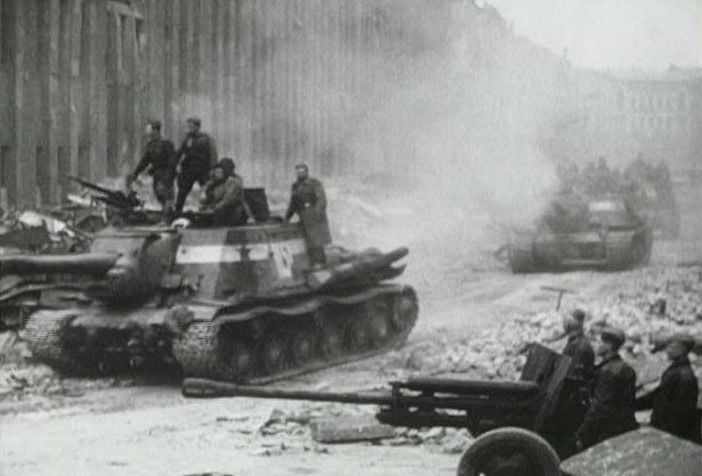 |
|
An ISU-152 column rolling through the Berlin streets
|
|
Lend-Lease vehicles like the M4A2 Sherman ‘Emcha’ were part of the 1st, 3rd and 9th Guards Mechanised Corps in Berlin and M10 Tank Destroyer was also sent to the Soviets as part of the Lend-Lease program. They also were fielded with the horizontal air recognition lines in some cases, as well as tactical numbering and other tactical symbols and slogans.
|
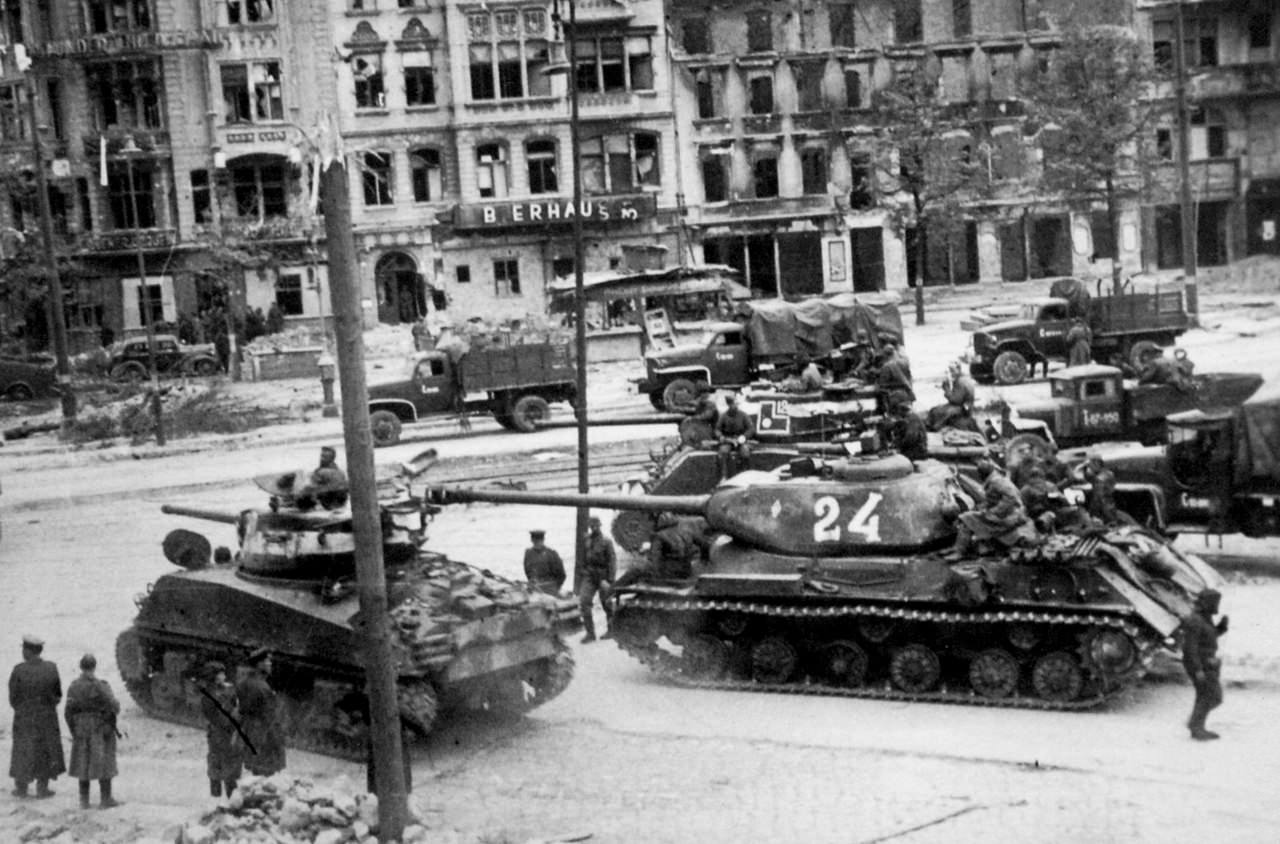 |
|
Two Sherman M4A2 ‘Emcha’ and an IS-2 Heavy tank, note the L tactical markings and turret markings
|
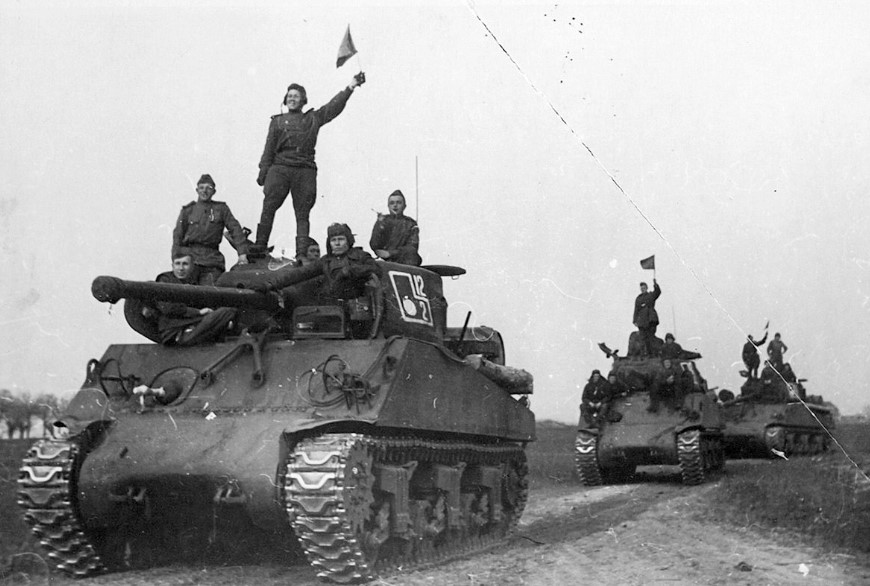 |
|
Lend Lease – Sherman M4A2 ‘Emcha’, note the L-shaped tactical symbol
|
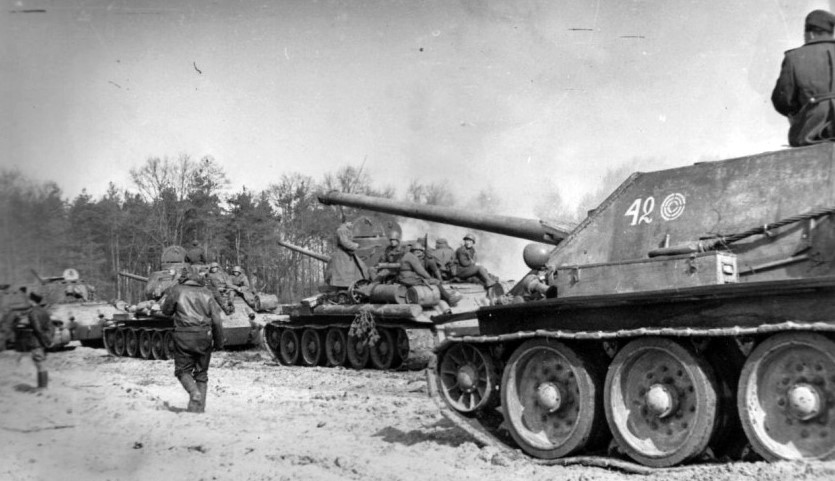 |
|
An SU-85M and a column of T-34s, note the Tactical symbol next to the 42 on the SU-85M
|
|
I think overall the Soviet Berlin book really allows you to add some very different-looking models in your Soviet WW2 force, which is typically just seen as waves and waves of green, with very little in the way of distinctive tank markings. Additionally, you can also add extra items to your vehicles like stowage and ‘bed-spring’ armour to make your Berlin force stand out from your standard Soviet Force.
I think my favourite is the T-34/85 with air recognition markings and of course the Polar Bears of the 7th Guards, oh and the 1941 winter T-34s. I’m looking forward to seeing what some talented modellers put together.
|
|
Happy Gaming
~ Adam Brooker
|
Last Updated On Friday, February 17, 2023
|
|
|